Caddo LakeLOUISIANA - TEXAS |
|
||||
|
|
|
Caddo Lake is a 25,400 acres lake and wetland located on the border between Texas and Louisiana, in northern Harrison County and southern Marion County in Texas and western Caddo Parish in Louisiana. The lake is named after the Southeastern culture of Native Americans called Caddoans or Caddo, who lived in the area until their expulsion in the 19th century. It is an internationally protected wetland under the RAMSAR treaty and features the largest Cypress forest in the world. Caddo is one of Texas' few non-oxbow natural lakes and is the 2nd largest in the South; however, it was artificially altered by the addition of a dam in the 1900s.
Industry came to Caddo Lake with the discovery of oil beneath it. The world's first over water oil platform was completed in Caddo Lake in 1911. The Ferry Lake No. 1 was erected by Gulf Refining Company. The well bottomed at 2,185 feet and produced 450 barrels per day. Oil derricks sprang up throughout the lake, around the turn of the 20th century, further damaging the fragile ecosystem. The oil industry left Caddo for richer fields at Kilgore and other locations in Texas. Texas tried to preserve parts of Caddo in 1934 by establishing a State Park, constructed by the WPA. The establishment of the Longhorn Army Ammunition Plant on the shores of Caddo, in the mid 20th century, polluted large portions of the surrounding wetlands until its closure in the 1990s. In 1993 Caddo Lake preservation entered a renaissance, with the announcement that 7,000 acres of Caddo purchased by the Nature Conservancy were to be merged with the 483 acre Texas Caddo Lake State Park to be become the Caddo Lake State Park and Wildlife Management Area. As a result of efforts by the Caddo Lake Institute, in October 1993 Caddo Lake became one of thirteen areas in the United States protected by the Ramsar Convention. As of 2003 Caddo Lake flora and fauna consisted of: 189 species of trees and shrubs, 75 grasses, 42 woody vines, 216 kinds of birds, 90 fish and reptiles, and 47 mammals. One of these species, Crataegus opaca or mayhaw fruit, is collected from the water to make a jelly that is considered one of the finest in the world. Forty-four of Caddo's native species were either endangered, threatened or rare. From 2001 until 2003 Caddo Lake residents fought a legal battle with the City of Marshall, Texas over water rights. The lake is currently "under siege" by a fast-spreading, Velcro-like aquatic fern, Salvinia molesta, also known as Giant Salvinia. Accidentally introduced to the lake by boaters, the noxious weed doubles in size every two to four days, rapidly killing off life below the surface. Most of the growth of the plant is currently on the Louisiana side, where officials have been focused on recovering from damage caused by Hurricanes Katrina and Rita in 2005. Efforts at removing the weed have included biological means via beetles that normally eat the weed but cannot survive the Texas cold and now include herbicide. The Texas Water Resource Institute's Caddo Lake Salvinia Eradication Project is evaluating multiple methods of eradication. |
Nearby Lakes
5 miles
6 miles
8 miles
13 miles
14 miles
14 miles
16 miles
19 miles
|
||||
|
Quick Links Caddo Lake News Caddo Lake Photos Caddo Lake Videos |

 Login
Login






